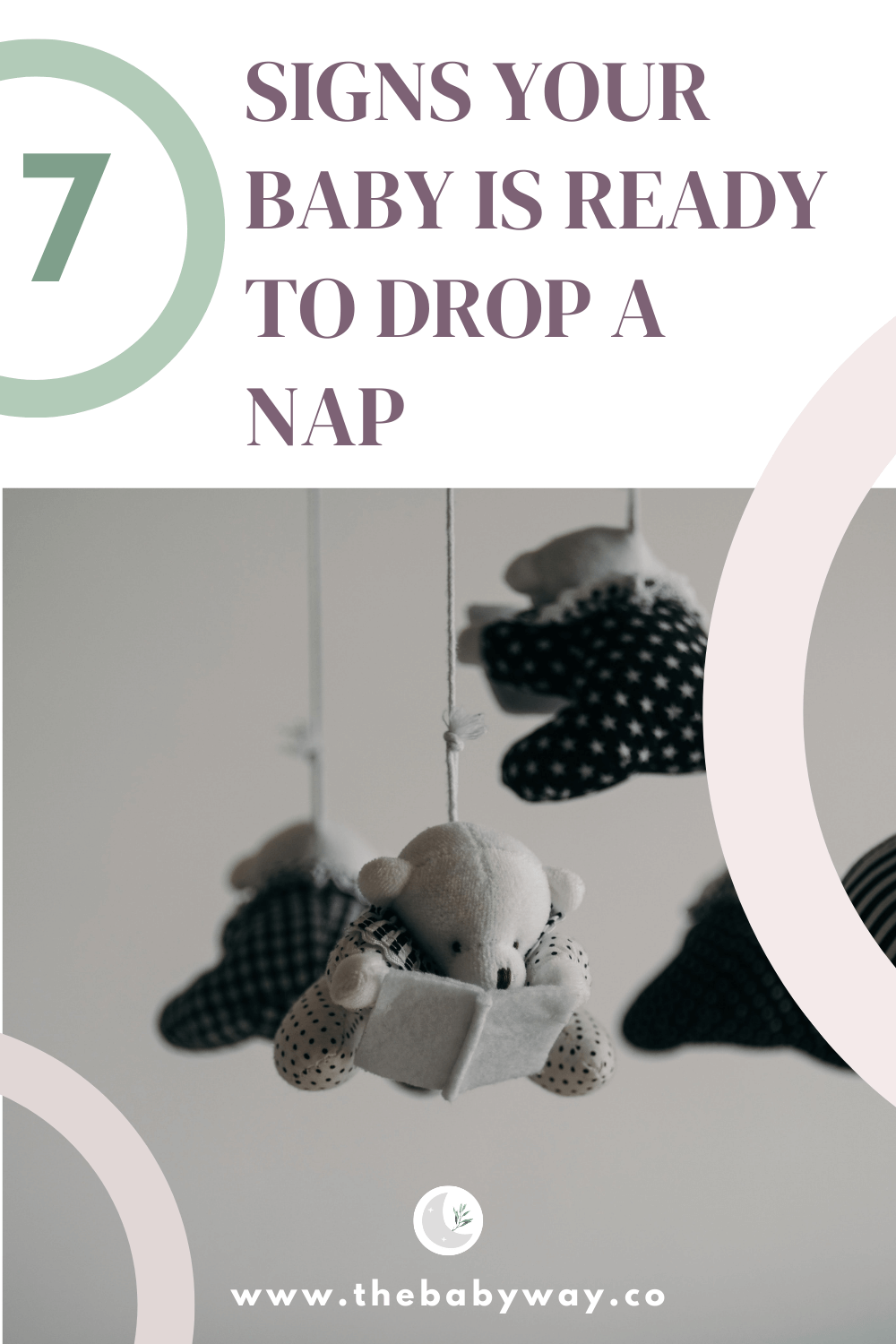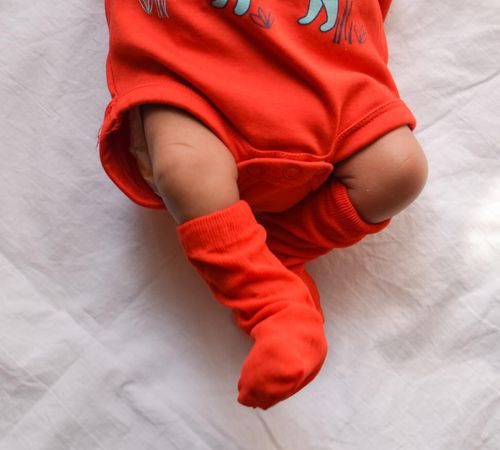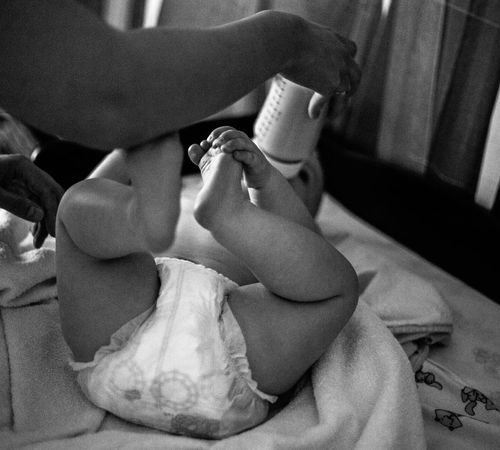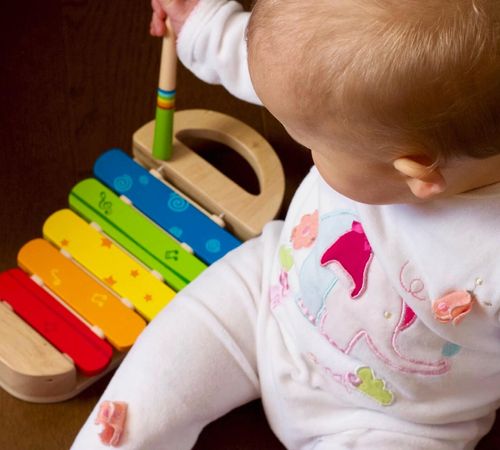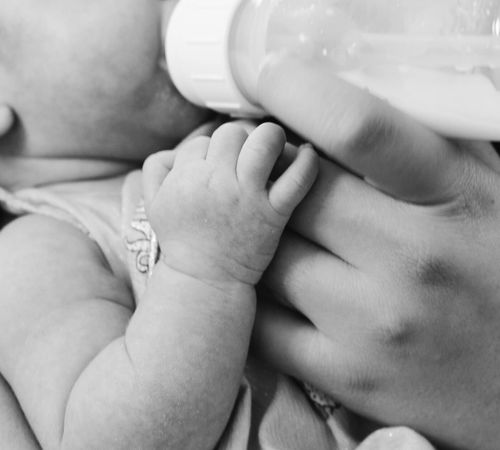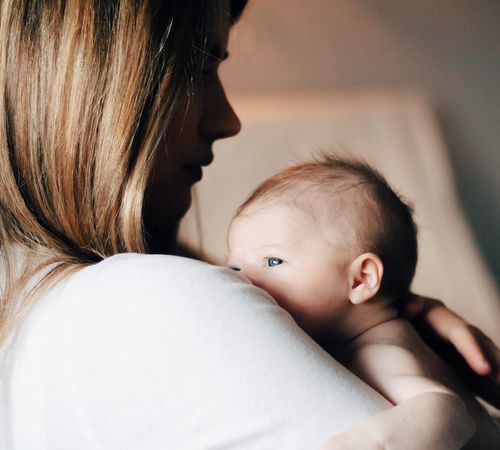Figuring out when it's time to drop a nap can be a real challenge. You think you've got your little one's sleep schedule all sorted out. And then suddenly, from one day to another, they decide they don't want to nap anymore. So let's talk about the typical timings of nap transitions for all ages and 7 signs that your baby is definitely ready to drop it.
Ohh, I love naps. Naps are great. If I could nap myself, I would love them even more, but who are we kidding?! As parents, we are just as happy when our little ones sleep during the day so we can get some time to breathe.
But as usual, once you have finally figured out something, like baby's naps, those little cuties come along and throw you off the trail. And whenever I sensed that a nap transition might be coming, I had three important thoughts:
1.) I want to hold on to that nap for all eternity.
2.) What am I even going to do with my baby during all this additional time without the nap?
3.) Is it really time to drop the nap, though?
While I was already mourning the probable loss of the nap and thought of endless baby activities to kill time, I would go through all the signs that it was indeed time to bid my heartfelt farewell.
In this article, we will talk about the times of the most common nap transitions and how you can detect a nap transition that is about to happen.
This article covers:
1. Why Nap Transitions Are A Thing
Before diving into the specifics of dropping a nap, it's important to understand the typical sleep patterns of children at different ages.
Babies and toddlers need regular naps to help them regulate their stress levels and regain new energy. Whenever your baby is awake, their cortisol levels (stress levels) rise. In order to decrease those levels, they need to sleep regularly throughout the day.
While newborns still need a lot of sleep during the day, daytime sleep will naturally decrease with growing age. They will need fewer naps as their bodies are able to handle longer wake times. Daytime sleep will decrease while nighttime sleep becomes more consolidated instead.
2. How to Know When to Drop a Nap
Babies and toddlers will always experience highs and lows when it comes to sleep. This does not necessarily mean they are ready to drop a nap.
But recognizing the right signs that your child is ready to drop a nap is essential for ensuring a smooth transition. It will help you prepare for the nap transition and make it easier for your baby (and yourself).
On a side note: you also don't have to see all of the following signs. Most likely, you will encounter 2-3 effects on your child's sleep. But you should make sure that you are experiencing the signs listed below in a regular pattern. Day sleep can also be influenced by other events, such as a sleep regression or a developmental leap.
Here are the 7 most common signs that your little one is really ready for a nap transition.
1. They take a long time to fall asleep for the nap
One of the most common signs that your baby is ready to drop a nap is when they take a long time to fall asleep or need excessive help.
Possible Scenario: Your baby used to fall asleep easily in the carrier for their afternoon nap. Now you have to walk around for 30-40 minutes for them to finally doze off.
This behavior shows that your little one is not tired enough to take that nap and may be ready to drop it. The afternoon nap is usually the first one to drop, and your baby will now have the longest wake window between the lunch nap and bedtime.
2. They fight the nap
Some babies will not only take a long time to fall asleep, they will even fight that nap. They are way more interested in playing and will show you loud and clear how they feel about a nap right now. A nap strike is very common when a nap transition is coming.
Possible scenario: Your baby gets frustrated and starts to cry as soon as you start your nap routine or walk into the bedroom. They only stop once you get them out.
If your baby has become reluctant to sleep at their usual nap time, then try to skip the nap and see how they can handle a longer awake time.

3. Bedtime becomes late
Tired signs will always give you the best indication that your baby is ready for bed in the evening. However, if bedtime becomes later because of the last nap, it is another sign that it's time to drop it. Even a short but late afternoon nap can delay bedtime by 1-2 hours.
Possible scenario: Your baby's bedtime was usually around 7-8 PM. Lately, bedtime is pushed back more and more, and your baby still has trouble settling to sleep.
If you want to keep an earlier bedtime, you need to lengthen the last wake window. Either by shortening the nap or cutting it completely.
4. Naps become automatically shorter
A short nap is another indicator that your baby might be ready to skip it. Your baby will start to naturally cut short on the nap. Thereby, the length of the nap gradually decreases over a period of a few weeks. Your baby will wake earlier from their nap due to low sleep pressure. Often they will wake after one sleep cycle.
Possible scenario: Your baby's morning nap used to be around 45 minutes. Over the last few weeks, your baby has shortened the nap to a half-hour and now only sleeps for 20 minutes max and wakes by themselves.
5. They wake up at night to play
Arghh. These ones are tough. Your baby wakes in the middle of the night, and you handle it just like every other night waking, thinking they will settle back to sleep. Then the horror: they start babbling and suddenly seem wide awake. They talk, stand up, jump. While all you can do is barely lift your head. It's as if your baby thinks they just had an evening nap and are wide awake.
These fun little interruptions are called split nights. Your baby wakes in the middle of the night, ready to play. Now, split nights every now and then are normal. But if you are experiencing them regularly or for several days in a row, it's a clear indication that your baby is getting too much daytime sleep. Depending on how much daytime sleep your baby is having, you would want to increase the last wake window, which might also mean you might need to cut a nap.
6. The time of the following nap is delayed
Babies don't always sleep at the same time. But they will most likely have a usual time range for their naps. Maybe you are even following a nap schedule that used to work until recently. If your baby's naps start to shift because of a previous nap, you might consider cutting that nap.
Possible scenario: Your baby has its usual morning nap. However, your little one does not seem tired enough for their second nap, the lunch nap at the usual time, so you have to delay it by an hour or more.
7. Nighttime sleep decreases to under 10 hours
Your baby's amount of daytime sleep will naturally decrease as they get older. Their little bodies are capable of going through longer wake windows, and their tiny sharp minds are more interested in play and the world around them. So their overall sleep needs in a 24-hour period will decrease. However, this also means that nighttime sleep can be compensated by daytime sleep. Instead of sleeping the usual 10-12 hours a night, they sleep 8-9 hours and get that lost sleep during the day by napping.
Possible scenario: Your baby used to sleep from 7/8 PM to 6/7 AM. Now, even though your bedtime is 1-2 hours later, they still wake at 6/7 AM. This means they get a maximum of 10 hours of sleep at night or even less.
3. How to Drop the Nap
Once you're sure that your little one is ready to drop the nap for good, it's time to tackle the nap transition process.
Shorten the nap first
If you think your baby is not ready to drop the nap completely, start shortening it. I know waking a sleeping baby sounds scary, but this can help your baby get used to more awake time during the day.
Let them nap every other day
If you already have short naps, you can skip the nap every other day and see how your baby handles it. You don't necessarily have to go cold turkey. It's okay if, on some days, your little one still needs a power nap. It often depends on their nighttime sleep, when they got up in the morning, and what your planned activities for the day are.

Bring bedtime forward
Staying up until your regular bedtime will be a challenge for your baby in the beginning. So to prevent having an overtired baby, aim for an early bedtime (30-60 minutes earlier). Keep this earlier bedtime while your baby gets used to the longer awake window. You can gradually delay bedtime once your baby has completely dropped the nap.
Have low-key days
Children have sensory cups that need to be filled every day. Depending on how much their cup is filled, they will be more or less tired. If you are out all day long, your child will get more tired than if you integrate low-key afternoons at home. Until your little one gets used to longer wake windows, you can engage in more quiet play at home that doesn't cost them too much energy.
Have an afternoon snack
It is normal for children (and us) to have a dip in energy in the afternoon. If your baby is on more than one meal a day, you can start to offer a healthy afternoon snack to boost their energy until dinner (snack along to get some energy yourself. Bananas, apple puree with oatmeal, or raspberries are good options.
Introduce quiet time
Even if your child no longer needs a nap, they may still benefit from a period of quiet time during the day. Encourage calm activities like reading or puzzles to promote relaxation.
4. Common Age Ranges for Nap Transitions
Here are the most common ages at which nap transitions happen:
- 3/4 months: 4 to 3 naps
At 3 months, most babies have a regular nap pattern of 3 naps, the morning nap, the lunch nap, and a short afternoon nap. - 8/9 months: 3 to 2 naps (afternoon nap will be dropped)
Between 8 and 9 months, babies start to increase the length of the last wake window. They will drop the 3rd nap of the day. - 13/14 months: 2 to 1 nap (morning nap will be dropped)
Most babies are now ready to switch to one single nap. The lunch nap will now the only nap left. - 2 1/2 - 3 year: 1 to 0 naps (lunch nap will be dropped)
Starting at 2 1/2 years, toddlers can start to skip the lunch nap. At 3 1/2 years most children have dropped the last nap.
5. Conclusion
Always keep in mind, that dropping a nap is not a transition that happens from one day to another. The length of the nap might decrease first. Or your baby will only skip the nap every other day. You might need to bring bedtime forward to prevent overtiredness. Either way, your baby will still need to adjust to a longer wake window.
There is really no need to stress about an upcoming nap transition (writes the lady that still mourns the lunch nap of her toddler). When you watch out for the most common signs mentioned above, you can start a gradual process of the nap transition. By making small alterations to their current nap schedule, you will help your baby get used to longer wake windows. And in no time, you both will forget about that nap (unless, of course, it's the very last nap to drop because you will always mourn that one).
6. FAQs
How can I differentiate between a nap regression and a nap transition?
A nap regression is a temporary disruption in sleep patterns, usually caused by developmental milestones or changes in routine. In contrast, a nap transition signifies a permanent change in the child's sleep needs and schedule. The 'symptoms' of a nap regression are not permanent, while you will see the signs for a nap transition consistently.
How long will the nap transition last?
The nap transition process can take from 2 weeks to a couple of months. Transitioning from 3 to 2 naps and 2 to 1 nap can take up to a month. When you are about to drop the last nap of the day, it can take a couple of months. Your toddler might still need the nap every now and then.
Can I bring back a dropped nap if it doesn't work out?
Yes, if you find that dropping a nap has a negative impact on your child's overall sleep quality, e.g., they are overtired in the evening, experience more night wakings or early morning wakes, it's possible to reintroduce the nap and adjust the schedule accordingly. Every child is different, and flexibility is key.
Should I follow a strict nap schedule or be more flexible?
It's essential to strike a balance between having a consistent nap routine and being flexible. Children thrive on routine, but being overly rigid can create unnecessary stress. Find a middle ground that works for your child and your family.
